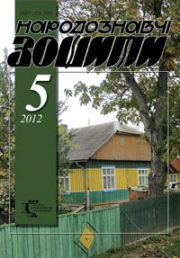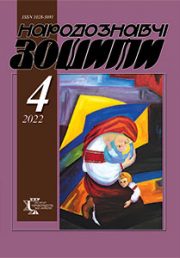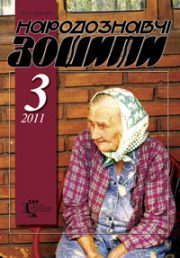The Ethnology Notebooks. 2021. # 1 (157), P. 142—147
УДК 75.071.1(493)”э18/19″(092)
DOI https://doi.org/10.15407/nz2021.01.142
Mariya KLYMENKO
- ORCID ID: https://orcid.org/0000-0002-7792-3714
- PhD Student of the Lviv National Academy of Arts,
- 38, Kubiyovycha Str., 79011, Lviv, Ukraine,
- e-mail: klymenkomary@gmail.com
THE IMPACT OF ALEXANDER ARCHIPENKO’S ART ON THE FORMATION OF MARTHE DONAS’ ARTISTIC PLATFORM
Formulation of the problem. The intersection of creative ways and personal relationships of the Belgian artist Marthe Donas and Alexander Arkhipenko began in 1917 in Nice, where the sculptor was during the First World War. Having moved to the French Riviera, artist becomes a student of Alexander Arkhipenko. The article deals with the peculiarities of the impact of the author’s methodology of Alexander Arkhipenko on the formation of the artistic platform of Marthy Donas. The artist learned the basic ideological and aesthetic principles of creativity of the sculptor-reformer, which in the future in its professional development has become new plastic-stylistic modifications.
The purpose of the article is to explore the features of impacts seeking of Alexander Archipenko’s art (1887—1964) on the formation of Marthe Donas’ aesthetic worldview (1885— 1967).
The methodology of the research work is the using of historical and cultural approach to contextualization of a certain range of artistic phenomena. In the art history examination formal and structurally typological methods were used.
The innovation of this work is the discovering of figurative and plastic Archipenko’s conceptions in M. Donas’ artistic process. A wide comparison of two artists’ creative works was made for the first time. Conclusions. The main Archipenko’s principles of shaping were accumulated in the paradigm of M. Donas’ art. In spite of this M. Donas is considered to be the first woman whose artistic program was demonstrated in the sphere of abstract painting. Having analyzed of Archipenko’s and M. Donas’ creative works during 1917—1920 it was discovered that she had embodied a number of visual characteristics of the sculptor’s aesthetic ideology.
Keywords: Alexander Archipenko’s art; M. Donas’ aesthetic ideology; figurative and plastic conceptions; principles of shaping; Cubism; plastic-styling modifications.
REFERENCES
- Boon, K., & Pauwels, P. J. H. (2016). Marthe Donas: a woman artist in the avant-garde. Brussels: Ludion.
- Benezit, E. (1976). Dictionnaire critique et documentaire des peintres, sculpteurs, dessinateurs et graveurs de tous les temps et de tout les pays. Paris: Grund [in French].
- Dunford, P. (1990). A biographical dictionary of women artists in Europe and America since 1850. New York; London: Harvester Wheatsheaf.
- Neitzel, L.H. (1920). Nell Walden Tour Donas: Siebenundachtzigste Ausstellung. Berlin: Der Sturm [in German].
- Herbert, R.L., Apter, E.S., & Kenney, E.K. (1984). The Societe Anonyme and Dreier Bequest at Yale University: A Catalogue Raisonne. New Haven; Conn: Yale University Press.
- Aseeva, N. (2001). Alexander Archipenko’s ideas in art practice of XX century. Conference thesis (Pp. 2—6). National Art Museum of Ukraine [in Ukrainian].
- Life and work. Archipenko Foundation. Retrieved from: https://life-and-work.html
- Tuijn, M. Alexander Archipenko and Theo van Doesburg. Retrieved from: https://www.academia.edu/401901/Alexander_Archipenko_and_Theo_van_Doesburg.
- Marthe Donas. A Woman Artist in the Avant-Garde. Donas Foundation. Retrieved from: http://www.marthedonas.be.
- Pauwels, P. J. H. (2018). «Votre letter m’a bien interessée», Marthe «Tour» Donas et la scène artistique vers 1920. Leuven: Leuven University Press.
- Dreier, K.S., & Duchamp, M. (1950). Collection of the Societe Anonyme: Museum of Modern Art 1920. New Hawen: Yale University Art Gallery.
- Lisson, M. (2015). The strugle of Marthe Donas. Retrieved from: https://www.schirn.de/en/magazine/context/the_ struggle_of_marthe_donas/.






